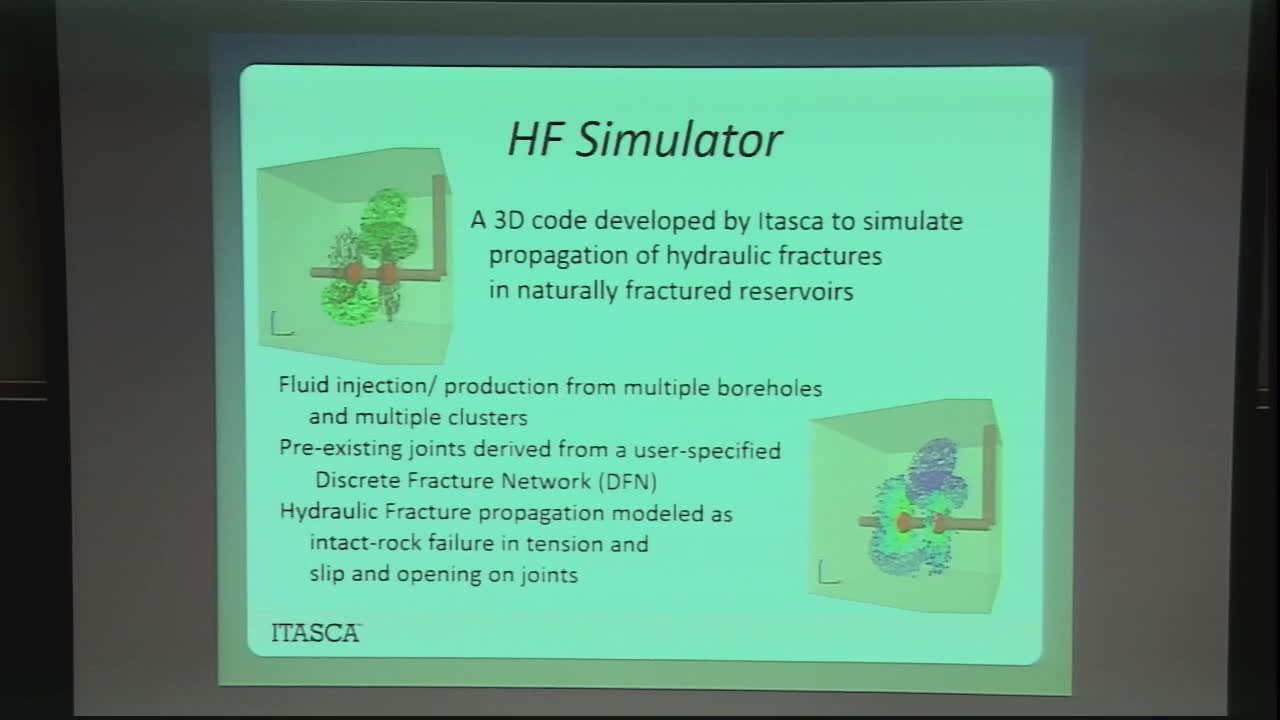A Lattice-based Code for Simulation of Hydraulic Fracturing: Logic Overview and Application Examples
Presenter
May 13, 2015
Keywords:
- Lattice
MSC:
- 03G10
Abstract
The talk presents a three dimensional lattice-based approach to simulate propagation of multiple hydraulic fractures in naturally fractured reservoirs. In this approach, fracture propagation occurs as a combination of intact-rock failure in tension, and slip and opening on pre-existing joints.
The brittle rock material is represented in the lattice by an assembly of point masses (nodes) connected by springs. A discrete fracture network (DFN) can be imported in the lattice to represent the pre-existing joints. A network of fluid nodes connected by pipes is also defined in the lattice. The propagation of a fracture is modelled by allowing springs to break, and new fluid connections to form, as well as allowing slip and opening to develop on pre-existing joints.
The fluid-mechanical algorithm is outlined. Several application examples of fluid injection in a horizontal borehole are presented. A homogeneous medium is considered in the first example and injection occurs in a borehole with two clusters. The distance between clusters is made to vary to investigate the impact of stress shadow on fracture path. Also, the fluid viscosity is another parameter considered in the investigation. Simulations of fluid injection in a DFN environment are considered in the second example and the fracturing behavior is compared with that obtained for a homogeneous medium.
